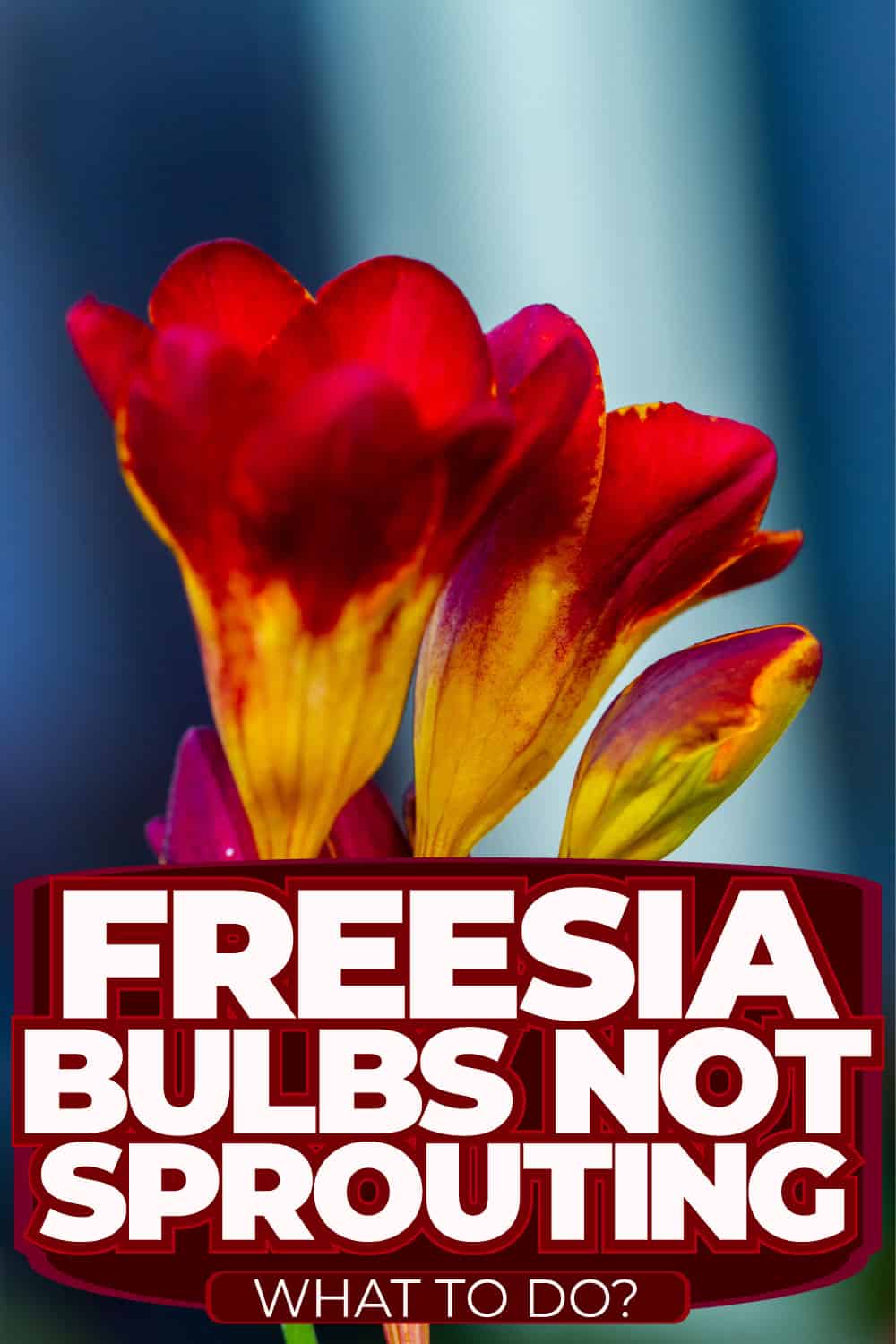Freesia's vivid blossoms and upright leaves make it a standout plant. However, the inability of a freesia to sprout can be frustrating for gardeners, but there are several potential causes for this behavior, and the majority of them are easy to fix. If you're wondering what to do when your Freesia doesn't sprout, here's what expert gardeners advise you do.
You can do three different things to freesia bulbs that don't sprout. You can mulch the bulb, leave the leaves, or divide the bulb. The best advice to prevent this, is by planting the best bulbs. The absence of flowers on a freesia could be due to cultural factors, environmental factors, or even physical factors.
Before learning why freesia bulbs do not sprout, you need to know the features and how to prevent this from happening. Keep reading until the end as we will expand more on this.

Fressia Bulb [Features]
Freesia, also referred to as corms, belong to the Iridaceae family and got its name from Friedrich Freese, a german botanist. You can find most freesia in Cape Provinces that span across South Africa and Kenya. It is a decorative plant that is termed a hybrid of several freesia species.
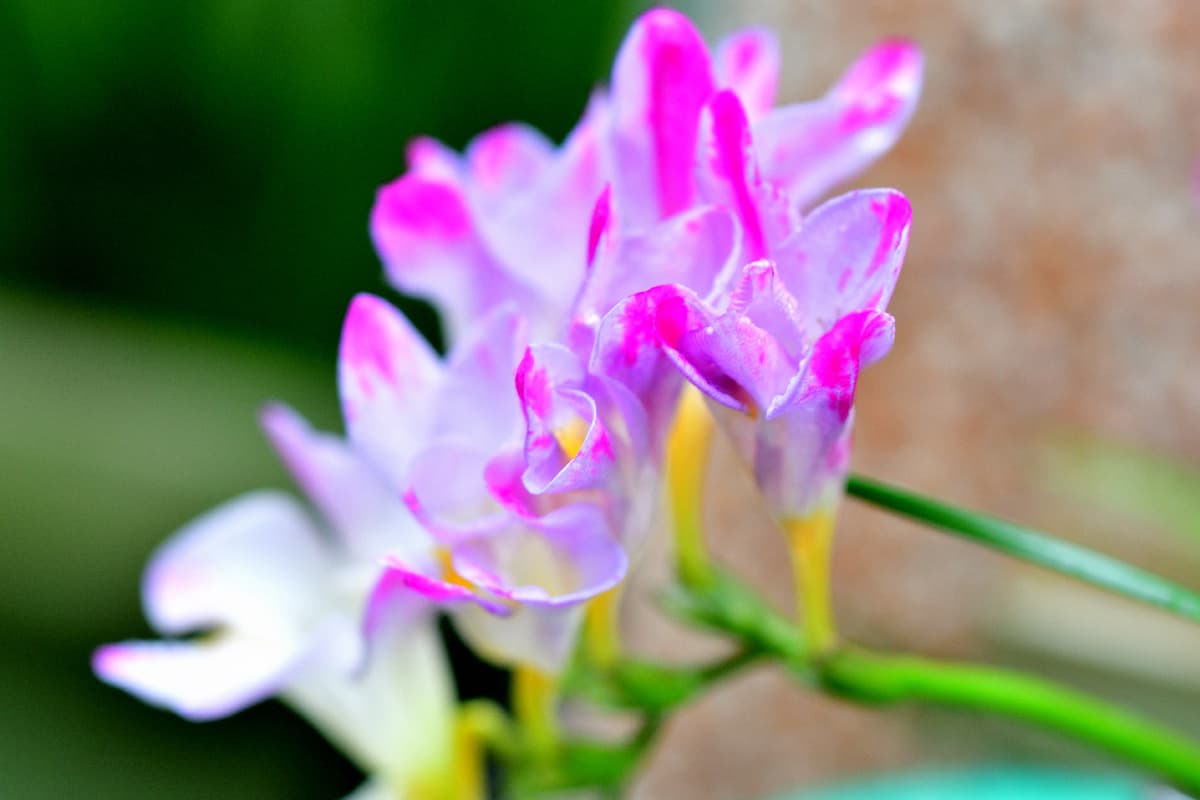
They occur in yellow, mauve, purple, orange, and white. Freesias grow from bulb-like corms in pots or borders. Corms bloom 100-120 days after planting in their first year.
Why Are Freesia Bulbs Not Sprouting?
Freesias frequently fail to bloom due to a deficiency in one or more of the plant's nutrients. You should also let the foliage remain after the blooms have died off so that the corms can store solar energy to be used for the following season's growth when it comes time for them to sprout.
After they have been planted, freesias should receive a generous amount of water but not again until they have sprouted. Corms can often begin to sprout anywhere from one to three months after planting, depending on the location and species.
Bulb Quality
Even before bulbs are planted, some elements affect blooming. Unhealthy bulbs don't grow, so check their quality before planting. If so, the plant is stunted. Root rot, bulb rot, and mold are caused by fungus and bacteria in bulbs. Maggots and bulb mites can damage bulbs.
Before planting bulbs, check for unusual colors, textures, or shapes. Squeeze your bulbs; unhealthy bulbs are dry, squishy, or moldy. Avoid these bulbs. A healthy bulb is firm, and the right weight for its size. Larger bulbs grow healthier plants.
Time of Planting
Soil temperature impacts the bulb growth cycle and therefore planting time. Plant spring bulbs in the fall. When soil cools, root development begins. Planting bulbs in the fall helps them get a good start next April. During fall's cooling soil, changes in the bulb prepare the shoot for healthy growth and bloom development.
Plant growth and flowering increase as spring temperatures rise. Photosynthetic leaves give resources to a freshly developed bulb for next year's cycle.
Extreme Climates
Unusual or dramatic climate changes affect bulbs sprouting. Temperatures affect the bulb growth cycle.
- Flower meristem formation requires summer warmth.
- Fall and winter temperatures promote root and shoot growth.
- Spring warmth affects plant development and flowering.
These cycles can be disrupted by pauses or temperature duration variations.
What to do If Freesia Bulbs Are Not Sprouting?
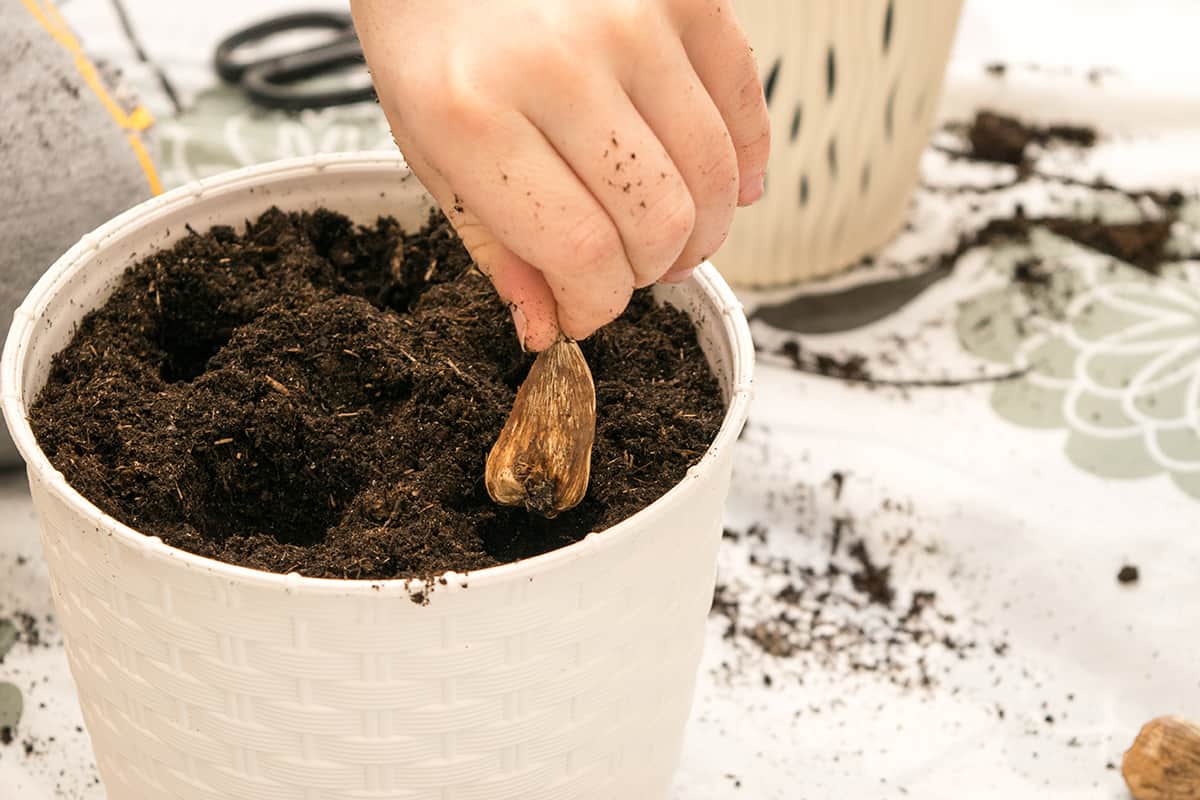
Now you've understood the reasons why freesia bulbs are not sprouting, what do you do about it? Here are the solutions we recommend.
Mulching
Mulching is a common practice that can assist in the regulation of soil temperature and moisture, but applying an excessive amount of mulch can hurt the growth of bulbs, and applying an insufficient amount might make plants more prone to damage from extreme temperatures and pests.
For more common bulbs like tulips, the optimum amount is approximately two inches. This amount will also provide great shelter for rodents like voles. Be mindful of the whole bulb depth, and avoid applying too much mulch; this is especially important for smaller bulbs.
Leave The Leaves
The amount of time that leaves are allowed to remain on a plant is another aspect that affects the number of carbohydrate reserves it contains. After the flowers have withered away in the late spring and early summer, the leaves get to work on their photosynthesis.
The resources generated during this period will fuel the bulb throughout the subsequent growing season. You should wait until the leaves have turned yellow and dried out before removing them. Be careful not to cut the grass on the leaves of any small bulbs that have naturalized in your yard before they have turned yellow.
The practice of deadheading is another step you can take to assist your bulbs in building up their resource bases. This will prevent the seedpod from developing and redirect resources into the bulb rather than being used to produce seeds.
Dividing Bulbs
There are instances when bulbs might become overloaded, which can produce fewer flowers. You should dig up, divide your clumps, and replant them every few years or whenever you fear this may happen. After the leaves have fallen off, you can do this in the late summer or the fall.
How Long Does It Take For Freesia Bulbs to Sprout?
After they have been planted, freesias should receive a good amount of water but not again until they have sprouted. Corms can often begin to sprout anywhere from one to three months after planting, depending on the location and species.
Freesias thrive in warm, sunny windowsills and will reward you with magnificent green shoots in approximately two weeks. Flowers will appear approximately three weeks after the green shoots appear.
How Do You Germinate Freesia Bulbs?
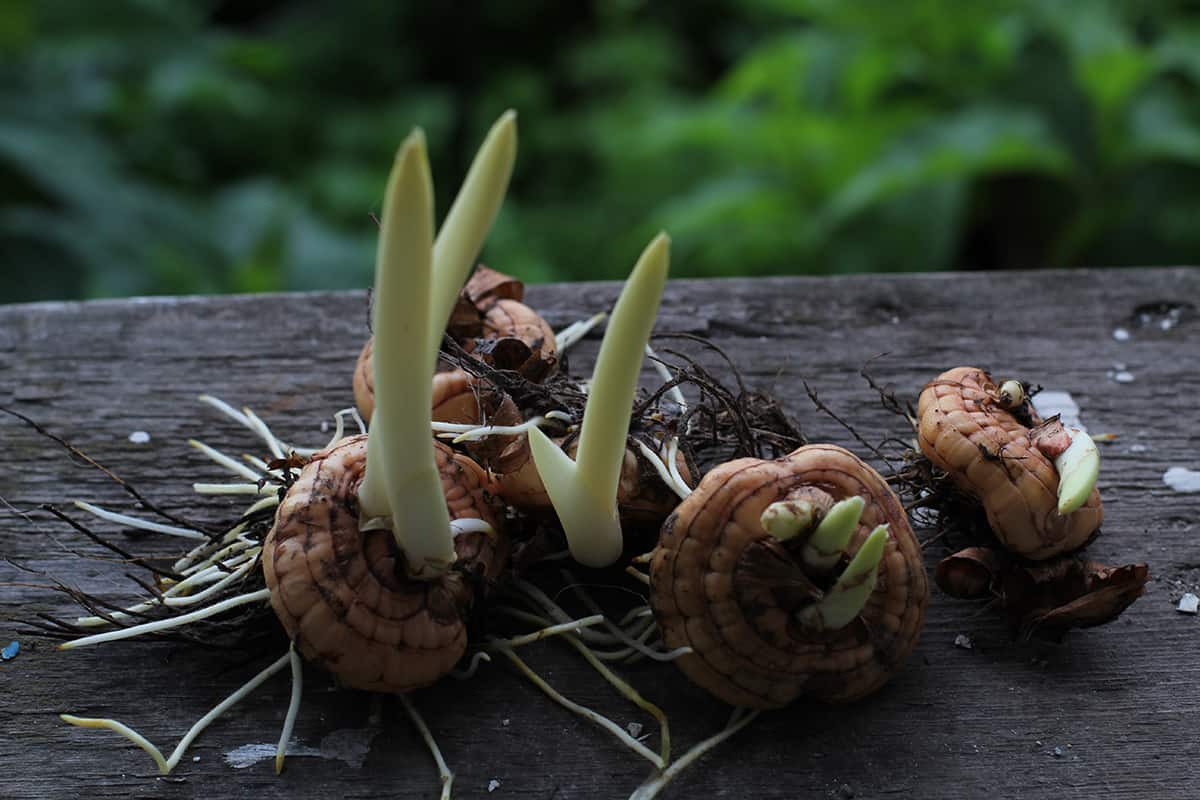
Plant freesia corms in soil or potting compost that has good drainage with the pointy end facing up, at a depth of 1–2 inches, and space them two inches apart.
After giving the container a good soaking with water, set it in a spot that is cool, shady, and frost-free; a temperature of about 41 degrees Fahrenheit (5 degrees Celsius) is just about perfect. After three to four weeks, when the first shoots sprout, relocate the plant to a warmer and more sunny location.
Is It Too Late to Plant Freesia Bulbs?
Freesia bulbs will grow foliage if you plant them during this time of year, but they may not bloom. Plant these bulbs anytime from the beginning to mid-October to ensure blooming from the middle to end of winter through mid-spring.
They will most likely produce flowers the following year, even if they do not do so this year. You should set your bulbs in the ground rather than storing them till the following year.
When Should You Plant Freesia Bulbs?
Plant freesias in a greenhouse between March and April, and then relocate straight outside between April and May, as long as the danger of frost has completely passed.
Additionally, they can be planted from September to November below ground to produce spring blossoms. After around four months from the time of planting, they will flower. Plantings should be staggered to extend the flowering season.
Is Freesia Easy to Grow?
They are simple to cultivate. You can easily coax freesia bulbs into blooming inside by placing ithemon a sunny windowsill.
You will be able to appreciate these gorgeous flowers year after year if you take the time to educate yourself on how to grow freesias in the yard and how to care for freesia flowers.
How Do You Look After Freesias in Pots?
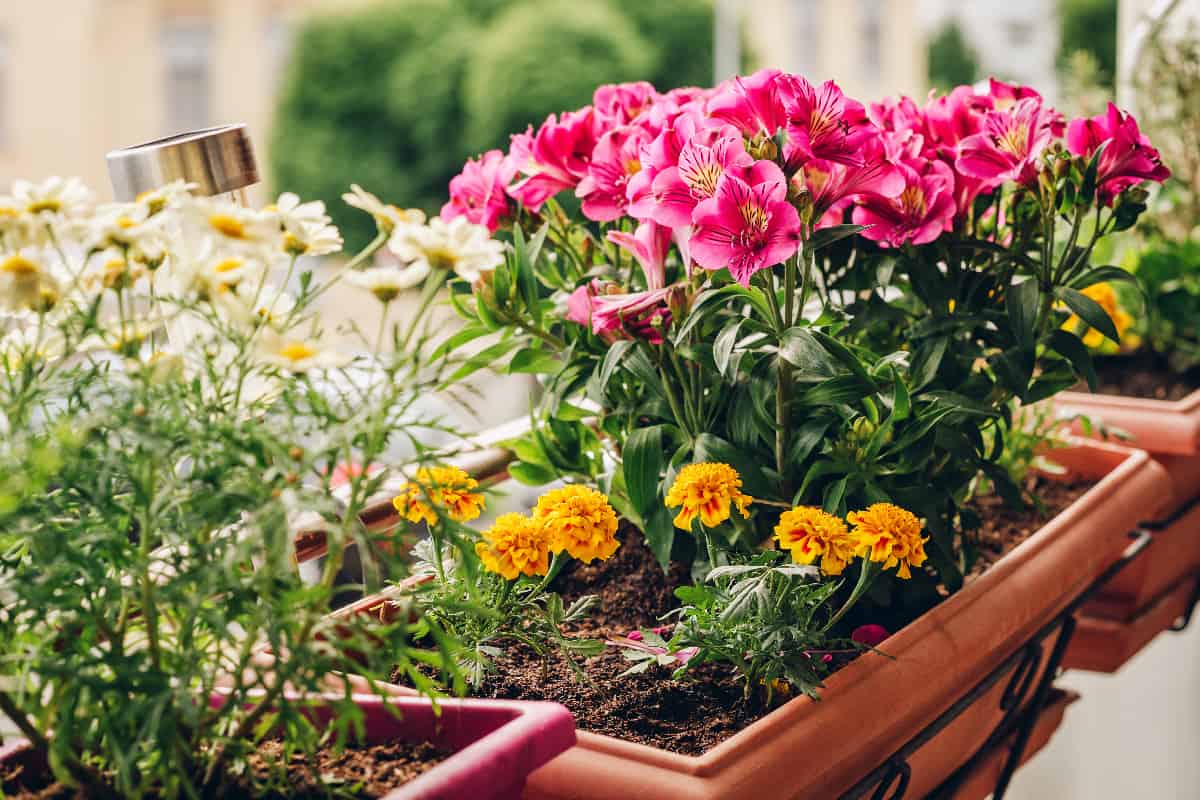
Here's how to look after Freesias planted in pots:
Understand The Life Cycle
The life cycle of a freesia plant consists of three stages:
- The first stage, known as the blooming period, is when the plant develops its lush, dark green leaves and its stunning blossoms.
- The second phase is known as the rest period, and it is during this phase that the plant will cease producing flowers and start utilizing its leaves to store energy in the form of corms.
- The third phase of the plant's life cycle is the dormant phase, which is important to allow the plant to recover so that it can bloom again the following year.
Cut Flowers Off Stem
When all of the plant's blooms have withered and died, the plant is ready to enter its resting phase. You are free to pluck the blooms from the stalks if that is what you would prefer, but you should make sure to save any portion of the plant that is green and not fading or yellowing.
During this time of year, sunshine is, by far and away, the most crucial factor. The green leaves must take in sunlight to photosynthesize and store energy for the following year; this process is comparable to hibernation. If insufficient nutrients are stored, the plant may decide not to blossom or may have significantly less foliage the next year.
Expose to Sunlight
After the plant's blossoms have been picked off, place the container in direct sunlight and fertilize the plant, following the directions on the fertilizer box. Keep the freesias in direct sunlight for the following two to three months, or until the leaves have turned yellow, whichever comes first.
In Summary
Dealing with freesia bulbs that don't sprout can be a headache but you can get the best out of your Freesia bulbs by following this guide. Utilize a bulb planting combination in pots; this will ensure that the resulting plants and flowers have the appropriate structure as well as the required nutrients.
For more on bulb plants, check out these related articles:
What to do With Freesia Bulbs After Flowering?
